The 25 Best Mutual Funds -- 2007
Why settle for less? These funds bear our mark of excellence.
If you feel confused, even dazed, by the proliferation of mutual funds in the marketplace, you're forgiven. Somehow, there are almost as many funds available as there are listed stocks, and most of them aren't exactly shy about tooting their own horn. So for our annual Kiplinger 25 survey, we've explored this vast universe for you and picked the best stock and bond funds to help you meet your wealth-building goals.
Our rigorous selection process is part science, part art. We only consider funds that do not levy a sales load, and we generally avoid funds with high ongoing fees. Like sales fees, steep expenses are a serious drag on your efforts to compound money over the years. We favor funds with modest minimum initial investments, typically $2,500 or less. And we shy away from unwieldy funds afflicted with asset bloat.
| Row 0 - Cell 0 | NEW! Visit the Kiplinger 25 Center for Year-Round Updates |
| Row 1 - Cell 0 | Key Data for the Kiplinger 25 |
| Row 2 - Cell 0 | Suggested Portfolios Using the Kiplinger 25 |
| Row 3 - Cell 0 | What's Changed Since Last Year |
| Row 4 - Cell 0 | Fund Rankings by Performance |
| Row 5 - Cell 0 | Sign Up for Kiplinger 25 E-mail Alerts |
We also closely examine the track records of portfolio managers -- the longer, the better. Outstanding long-term performance is a given, but we also pay attention to how those results are achieved. Consistency is important, as is the link between returns and risk. Funds that have produced modest returns are perfectly acceptable if they've taken below-average risks. And one subpar year doesn't disqualify a fund from consideration -- no fund excels year after year. Managers who are personally invested in the funds they run get extra credit; if they have their skin in the game, they'll feel the same joy and pain as ordinary shareholders.

Sign up for Kiplinger’s Free E-Newsletters
Profit and prosper with the best of expert advice on investing, taxes, retirement, personal finance and more - straight to your e-mail.
Profit and prosper with the best of expert advice - straight to your e-mail.
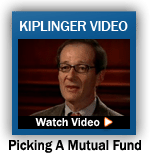
We ask portfolio managers directly to describe their strategies, styles and thought processes for buying and selling stocks or bonds. We gravitate toward managers with the discipline to hew to an investment style even if the stock market is temporarily uncooperative.
Listing our favorites is only part of the job; owning a single fund or two, or owning all 25 of them, does not a sound investment plan make. So we provide three portfolios using funds from the Kiplinger 25, each package geared toward investors with a different time horizon and level of risk tolerance (see suggested portfolios).
Large-company stock funds

Tom Marsico has made a name for himself investing in large, fast-growing companies, first at Janus and later at his own shop, where he now manages Marsico Growth and Marsico Focus with aplomb. Marsico 21st Century borrows some of the best ideas from those funds, such as Goldman Sachs and Wells Fargo, and mixes in some stocks of midsize and small companies. Managed by Cory Gilchrist, 21st Century's 16% annualized return over the past five years trounced the gain of Standard & Poor's 500-stock index by an average of nine percentage points per year (all results are to April 2; for complete, updated data on the funds, see the Kiplinger 25 update).
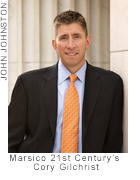
All the Marsico funds employ big-picture forecasting and company-by-company analysis. For example, Gilchrist says he was drawn to Moody's because of the rating agency's overseas expansion and the dizzying proliferation of debt instruments that need to be assessed. New management is revitalizing Heineken, the venerable Dutch beer brand that has a strong position in such emerging markets as Russia and Nigeria, where growing wealth means more money is available for premium brews (Marsico 21st Century has 14% of assets in foreign stocks). And in Amylin Pharmaceuticals, Gilchrist thinks he's found a biotech winner with a "revolutionary" diabetes drug, Byetta, that may someday displace insulin.
Of course, shares of large companies have trailed those of small companies for most of the past seven years, and large-company growth stocks have performed particularly poorly. But both Marsico and Gilchrist think the pendulum will swing back to growth this year. They note that even traditional value managers are buying growth stocks because their prices are irresistible. "This is an incredibly attractive asset class," says Gilchrist.
[page break]

Bob Smith is another fund manager who thinks big-company growth stocks will emerge from the wilderness in 2007. The key, he says, is to find companies that can expand even in a slowing economy. Smith, who manages T. Rowe Price Growth Stock, looks for companies that can sustain annual growth of 12% to 15% over three to five years and that sell for a reasonable price. Surprisingly few companies have the stamina to maintain 15% growth for five years, he says. The winners are generally companies that can sell more of their products or services and can raise prices.
Smith doesn't think Big Pharma is a growth industry anymore. But he does like biotech outfits, such as Genentech, and beaten-down health-care stocks, such as heart-device maker Medtronic. He also thinks that suppliers of telecommunications technology, including Cisco Systems and Qualcomm, can keep up their pace through a weaker economy. (Smith is slated to move from Growth Stock to T. Rowe Price International Stock next October. Rob Bartolo, co-manager of T. Rowe Price's Media and Telecommunications fund, will become manager of Growth Stock. We will revisit the fund later this year.)

Vanguard Primecap Core is one of those growth-oriented funds that stays out of trouble even in frothy markets. That's because the low-profile team of six portfolio managers at subadviser Primecap Management applies a value orientation to growth stocks and invests for the long haul.The managers look for industry leaders with sustainable advantages derived, for example, from research-and-development spending, superior technology or unique products. For instance, Primecap Core holds Corning for its lead in liquid-crystal-display glass materials and Monsanto for its productivity-enhancing seed technologies.

When Chris Davis and Ken Feinberg buy a stock for Selected American Shares, they expect a long-term relationship. Selected holds shares for more than ten years, on average, a millennium by mutual fund standards. Davis and Feinberg search for durable, powerful franchises that sell at attractive prices, and they have a soft spot for companies run by managers who, as Davis puts it, "under-promise and over-deliver" to shareholders.
The Selected duo tries to identify businesses being propelled forward by long-term tailwinds. They are fond of American Express, the fund's largest holding, because more consumers are using credit cards as a method of payment at home and abroad, rather than relying on cash and checks. Davis and Feinberg are also buying global leaders, such as insurance giant AIG, because overseas markets are generally growing faster than the U.S. market. Their formula works: Over the past decade, Selected American has returned 11% annualized, beating the S&P 500 by nearly three percentage points per year, on average.

Bill Nygren says he thinks in five-year terms when he considers stocks for Oakmark Select. He likes to shut out the daily noise on Wall Street and in the media and focus on long-term basics, such as the loyalty of a company's customers and its ability to generate cash and increase market share. "I think like a business owner, not like a trader," he says.
What excites Nygren now is that he's finding high-quality, large businesses with shares that sell at average prices. He figures these stocks will benefit from both rising earnings and higher price-earnings ratios. One such company is Western Union, the money-transfer business, which caters to migrant workers around the world. Among companies with strong international growth prospects, he holds satellite-TV channel Discovery and Yum! Brands, which operates KFC, Pizza Hut and Taco Bell restaurants. Select has struggled a bit over the past couple of years, but its long-term record is outstanding, and Nygren is a disciplined investor who adheres to value-investing principles.
[page break]

Fund managers don't come much steadier than Brian Rogers, of T. Rowe Price Equity Income, who also serves as chairman of the Baltimore, Md., asset-management company. Rogers notes that Equity Income was meant to be a conservative stock fund for retirement accounts when it was launched in 1985, and it still serves that purpose admirably. Rogers has piloted Equity Income for its entire ride, returning 13% annualized, which is an average of about one percentage point a year ahead of the S&P 500.
Rogers likes stocks that sell at below-market P/Es and pay above-market dividends. Equity Income has a strong value bent, but these days, says Rogers, he's finding value in traditional growth stocks, such as drug maker Eli Lilly. Rogers also likes companies, such as Bank of America and Abbott Laboratories, that steadily raise dividends.

Dave Williams, manager of Excelsior Value & Restructuring, says he's no slave to elaborate corporate spreadsheets. "We don't do much financial analysis," he says. Instead, he looks for industries under stress or undergoing consolidation. He likes shares of beaten-down homebuilders, such as Centex, that are selling near book value (assets minus liabilities). Williams also looks for industries and businesses that are profiting from long-term trends. He's a believer in strong global economic growth driven by surging developing nations, such as Brazil and China. That's one reason he likes United Technologies, which books most of its revenues abroad. His approach may sound simple, but his fund delivers the goods: a 14% annualized gain over the past decade, an average of six percentage points a year ahead of the S&P 500. (For more on Williams and his approach to picking stocks, see "Master of the Turnaround," March.)
Small- and midsize-company funds

It's not easy to find good small-company funds that are still open to new investors, but Champlain Small Company is a dandy. Scott Brayman, who launched the fund in 2004 with a team he brought over from Sentinel Small Company, invests in fast-growing companies but applies strict value-investing principles to his analysis. Why the concern for price? "The key to wealth creation is to avoid large losses," he says.
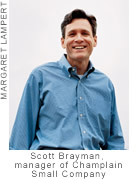
Brayman, who's based in Burlington, Vt., has developed an imaginative process for identifying superior business models. First, he eliminates industries (such as telecommunications and utilities) that require heavy capital expenditures. Brayman identifies attractive businesses by assessing the key risks in the five industry pools in which he swims: industrial, consumer, financial, health care and technology.
For example, he believes the major risk in the consumer sector is the fickle nature of fashion. So he focuses on companies that make everyday brands -- such as WD-40, producer of the eponymous lubricant -- that don't go out of style. "Brands create a more stable cash flow," he says. In finance, competition from such giants as Bank of America and unfavorable interest-rate moves are the risks. So Brayman looks for companies with lucrative niches, such as Boston Private Bank Trust, which focuses on wealthy individuals, and Philadelphia Consolidated, which provides insurance for such niches as day-care centers and nonprofit organizations.
Unlike many money managers, Brayman downplays the importance of the personalities who run a company. "Business models are much more dependable than people," he says.
It's hard to argue with his methods. During his time at Sentinel, from 1996 to September 2004, his fund returned an annualized 15%, beating the small-company Russell 2000 index by an average of six percentage points a year.
In its first two full years of operation, Champlain beat the Russell by six points in 2005 and trailed it by four in 2006. The fund's initial minimum investment is $10,000, although it may be available for less at some discount brokers.
Editor's note: Champlain Small Company closed to new investors after the latest Kiplinger 25 list went to press. New investors should use Baron Small Cap (BSCFX) and Excelsior Small Cap (UMLCX).
[page break]

Jim Barrow and Mark Giambrone relish investing in today's market. "As value managers, we're able to pick up former growth companies," says Barrow. As a result, the fund they run, Vanguard Selected Value, has a higher proportion of faster-growing midsize companies than usual.
Barrow describes his search for attractive companies this way: "We're like Hansel and Gretel. We follow the crumbs through the woods." Demographic trends show an increase in both low-income residents, such as immigrants, and well-heeled older folks. So Barrow bought Advance Auto Parts, which caters to low-end consumers who need to squeeze more life out of their cars, and Royal Caribbean International, a cruise line with a big base of senior customers who have plenty of time and money on their hands.

What happens if you apply a Warren BuffettÐstyle value-investing discipline to small growth companies? You get a roaring success. FBR Focus has generated an annualized gain of 18% over the past decade under Chuck Akre. He looks beyond price for businesses with high returns on capital, ample opportunity for reinvestment and managers who serve their shareholders' interests. "When you have those three factors, you get a compounding machine," says Akre, who works out of horse country in Middleburg, Va.
Akre seeks to compound money at 15% to 20% a year with low risk (he defines risk as a permanent loss of capital). So successful has he been at identifying "compounding machines" that many of the small companies in his highly concentrated portfolio have blossomed into much bigger concerns. Akre keeps them. "We don't have to cut our flowers to water our weeds," he says. (Learn more about Akre in Hello Again to a Top-Notch Fund, April.)
Overseas funds

Julius Baer International has compiled a dazzling record, returning 17% annualized over the past decade. The fund is closed to new investors, but there's a fine alternative in Julius Baer International II, piloted by the same dynamic duo, Rudolph-Riad Younes and Richard Pell, who run the original.
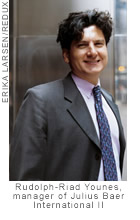
The Lebanon-born Younes says International II holds essentially the same portfolio as the original fund, but without the small-company stocks. About a third of the fund is allocated to stable blue chips, such as NestlŽ, the Swiss multinational food giant. Most of the rest is in stocks that Younes figures can double in three years and triple in five. In picking those stocks, Younes looks at long-term economic and industry trends. For instance, he's bullish on Eastern Europe because he believes those economies will blossom over the next two decades. He notes the relatively low number of Eastern Europeans with mortgages, as well as the region's low paper-consumption rates, and he invests in companies that will help former Eastern-bloc countries catch up with their cousins in Western Europe. Similarly, he believes that Indian banks are a screaming buy because their market values are tiny compared with the burgeoning Indian economy. "I can't see how you can lose money in Indian banks," he says.
Younes is also upbeat about the prospects for luxury-goods makers, which serve the rising nouveaux riches in emerging markets such as Russia, China and the Middle East. "The fastest way for the newly rich to show their wealth is through luxury products, such as jewelry and expensive watches," he says. So Younes has loaded up on bauble-maker Bulgari and the parent companies of Gucci, Louis Vuitton and Cartier.
[page break]

David Herro is on a roll. The fund he manages, Oakmark International, has returned 14% annualized during his nearly 15-year reign. It turns out that Oakmark's value discipline (Herro says he looks for stocks selling for at least 30% below their true worth) works as well overseas as it does at home. "We're value people," he says. "You have to consider price."
These days, he's finding value in European drug stocks; Novartis and GlaxoSmithKline are two large holdings. He also loaded up on DaimlerChrysler shares, betting that the German auto maker is in the early innings of a restructuring that will include unloading Chrysler. And he likes the way his food-and-drink holdings, such as Nestlé and Diageo, generate steady earnings gains.

The worst thing you could say about Dodge & Cox International Stock is that its recent returns -- 20% annualized over the past five years -- are unlikely to continue. Other than that, it's hard to find fault with this gem. Its performance is excellent, and its risk and fees are relatively low. Dodge & Cox's team-management style obviously yields shrewd collective judgment.
Analysts and managers study purchase candidates intensively and subject the companies to a range of scenarios to assess what could go wrong. "If we lock this portfolio away for five years in a box, what's the likelihood that we would find it diminished in value?" asks Diana Strandberg, one of nine portfolio managers. "We think of ourselves as part-owners of the businesses."

Chris Alderson has run T. Rowe Price Emerging Markets Stock since its inception in 1995, so he knows a thing or two about riding a roller coaster. "Emerging markets are a volatile asset class," he says. London-based Alderson, who steers the fund with three co-managers based in London and Singapore, manages risk by holding a diversified portfolio of about 140 stocks and focusing on steady growers that are selling at reasonable prices.
He says most developing economies are in fine shape these days, with generally sound fiscal policies, reduced debt levels and strong currencies. Some of his favorite plays are Brazilian and Mexican banks and Indian-infrastructure companies. Over the past decade, this fund has outpaced its benchmark by an average of three percentage points per year.
Go-anywhere funds

A disciplined value fund, Fairholme plays a mean game of defense as well as offense. If they can't find bargains, managers Bruce Berkowitz, Larry Pitkowsky and Keith Trauner let cash build to 20% to 30% of assets, then use the money to pounce on seductive opportunities tossed up during market corrections. The trio conduct thorough "investigative reporting" on companies and their bosses before they invest. They'd better. Fairholme's top-ten holdings recently accounted for 68% of assets. Their methods work: Fairholme has returned 18% annualized since its inception in late 1999, compared with the S&P 500's 1% annualized. It made good money even in the 2000Ð02 bear market.
Fairholme-owned companies are strong cash generators and have rock-solid balance sheets. But what Berkowitz and company really seek are outstanding managers who not only align their interests with those of their shareholders but also invest capital shrewdly. "We've put together a group of young Warren Buffetts," says Berkowitz. (Buffett's Berkshire Hathaway is a large holding.)
Berkowitz thinks he's found a Canadian Buffett in Murray Edwards, a billionaire who's tied up in three oil-and-gas holdings in the Fairholme fund. "Murray is off-the-charts great, a brilliant capital allocator," says Berkowitz. Fairholme has made a bundle in Edwards's Canadian Natural Resources, which bought oil assets cheaply and is a low-cost, rapidly expanding producer of petroleum. Berkowitz thinks the company can increase production 10% a year for 15 years and has enough oil-sands reserves to last 40 to 50 years. (The other Edwards-connected stocks that Fairholme holds are Penn West Energy Trust and Ensign Energy Services.)
[page break]

With Legg Mason Opportunity Trust, you get Bill Miller without handcuffs. "The fund is as unconstrained as a mutual fund can be," says Miller, whose streak of beating the S&P 500 at Legg Mason Value for 15 straight years ended in 2006. "Unconstrained" means Miller can pretty much run the portfolio like a hedge fund. He can buy commodities and currencies along with stocks and sell short the shares of companies he thinks are overvalued. Miller says he's presently shorting the oil and oil-services sectors.
So what does he like? His largest industry weighting is in steel stocks. Miller sees a long-term structural change in this basic industry because of global consolidation, which he believes will reduce cyclicality and improve cash flow. "This is no longer a boom-bust industry," he says. An independent thinker, he is also loading up on home-building stocks, such as Centex and Pulte, because many are trading at or below book value. Opportunity has outpaced the S&P 500 by an average of seven percentage points a year over the past five years and has beaten Legg Mason Value by an average of five points a year.

John Montgomery says he never reads Wall Street research or visits companies and that he knows little about fundamental analysis. He leaves work in Houston each day without knowing whether the market went up or down. Yet the MIT-educated engineer is a highly successful fund manager, thanks to his elaborate, computer-driven models.
Montgomery closely guards the "intellectual property rights" of his secret recipe. But he says he employs 16 different models that focus on such variables as financial ratios and risk measurements. Bridgeway Aggressive Investors 2 invests in companies of all sizes, but Montgomery hints at the way he thinks the market -- and his fund -- is moving: "I think the pendulum is swinging back to large-cap growth, which will be the sweet spot of the market for five years." Aggressive Investors 2 is coming off a rough year, but its long-term record is outstanding.

You can't accuse Ken Heebner of indecisiveness. The manager of CGM Focus reads the tea leaves and reconstructs his portfolio accordingly in a flash. But because Heebner has keen instincts and a fine sense of rhythm, his idiosyncratic method works. Focus has been on a tear since the beginning of the century, returning 27% annualized and destroying the S&P 500 by an average of 25 percentage points a year. (For more on Heebner and his methods, see "The Savviest Stock Picker in America," May.)

Ron Muhlenkamp is frustrated. He believes he called the economic slowdown correctly last year, but then missed the market's surge in the second half of 2006. That's because he positioned Muhlenkamp fund too defensively in stocks such as Pfizer and Johnson & Johnson and failed to lighten up enough on shares of homebuilders. "We looked kind of dumb in '06," he concedes.
A keen student of the business cycle, Muhlenkamp thinks the economy hit bottom in the third quarter of 2006 and is recovering. "We think we're in the springtime of a business cycle, so I want to be moving toward cyclical stuff, like Caterpillar," he says. In picking individual stocks, Muhlenkamp seeks companies that earn a high return on equity (a measure of profitability) and sell at a P/E lower than their return on equity. Last year was one he would rather forget, but with his disciplined, independent approach, Muhlenkamp will be back.

The beauty of Merger fund is that it doesn't move in lock step with the stock market. In fact, you can almost view Merger as a high-yielding bond fund, but without the interest-rate risk. The fund has returned 8% annualized since its inception in early 1989 and has had only one down year.
The three managers, Fred Green, Roy Behren and Mike Shannon, buy shares of companies involved in buyouts after the deals are announced. Let's say Company A makes an offer to acquire Company B for $10 a share. Target Company B's stock will likely sell at a discount to the transaction price, maybe at $9.50 a share, because there's some risk that the deal will fall through. Merger's managers size up the deal and, based on their analysis, determine whether it makes sense to invest in B's shares in hopes of capturing the final 50 cents of appreciation (more than 95% of deals are consummated). At the moment, there's plenty of merger activity in both the U.S. and Europe, a plus for the fund because it gives the managers plenty of choices.
[page break]
Bond funds

Kathleen Gaffney, co-manager of Loomis Sayles Bond, says she and partner Dan Fuss think of themselves as value investors in the fixed-income world. "We're sellers into strength, buyers into weakness," she says. The duo make the most of the fund's flexible mandate, opportunistically scouring the world for the best bond deals.
For instance, they're bullish on the Singaporean dollar, so they bought General Electric bonds denominated in that currency. That way, their fund can capture both the interest from the bonds and currency appreciation, assuming their expectations pan out.
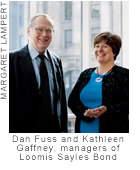
Fuss and Gaffney are keen on natural-resources producers, so they're keen on Canada, which, unlike the U.S., is paying down its debt and running trade surpluses. The pair stuffed the fund with Canadian debt and bought bonds of other big commodity exporters, such as South Africa and New Zealand. Gaffney says she still sees value in high-yield bonds at home, too. The U.S. economy is slowing, but corporate balance sheets are solid and the global economy is zipping along.
Loomis Sayles demonstrates what happens when you give some talented and imaginative bond investors a little freedom to roam. Over the past decade, the fund returned 10% a year, beating the stock market by an average of more than one percentage point per year. It yields 5.3%.

If you invest in Harbor Bond, you've hired the highly respected Bill Gross and his team at Pimco (the fund closely resembles Pimco Total Return). Gross is bearish on the housing market, which he figures will lead to a weaker economy. That will allow the Federal Reserve to start slashing short-term interest rates aggressively in the second half of 2007. With that scenario in mind, the Pimco team is packing Harbor with Treasury and government-agency bonds that mature in two to five years. Gross and team think the limp dollar will continue to decline against the euro, the yen and the currencies of many emerging markets, so Harbor is carrying an above-average weighting in foreign bonds. The fund yields 4.6%.

The folks at Dodge & Cox have made a name for themselves running excellent stock funds. But they're no slouches in the fixed-income arena, as shown by the consistent performance of Dodge & Cox Income. The medium-maturity bond fund features the San Francisco fund manager's hallmarks: low fees, strong research and risk management.
Dana Emery, one of the nine members of the team that runs Income, says her group sees the potential for higher long-term interest rates. As a result, the portfolio's average duration -- a measure of the degree to which the price of a bond or bond fund is likely to react to changes in interest rates -- is well below that of the fund's benchmark. The managers have also reduced holdings of corporate bonds because they feel they're not being paid enough for the risk.

Fidelity is another fund family that doesn't get enough credit for its fine fixed-income offerings. The nice thing about Fidelity Floating Rate High Income is that it can perform well even amid rising interest rates, an environment that's unfriendly to most bond funds. That's because the bank loans held in the portfolio are repriced every three months or so, whether rates rise or fall. The fund has been highly consistent and conservatively run. It yields 6.5%. (See Eureka! High Income, Low Risk.)

If the tax man is driving you into municipal bonds, you could do much worse than to invest in Fidelity Intermediate Muni Income. Manager Mark Sommer is avoiding high-yield munis, which he thinks are overvalued. "We're biased toward higher-quality, essential services, such as sewage, water and education," he says. He has also added bonds in states such as California, where he thinks a windfall from capital gains and executive stock options is creating extra demand for munis from well-heeled investors. The fund yields a tax-free 3.6%, which is equivalent to 5.0% for taxpayers in the 28% bracket and 5.5% for those in the top, 35% bracket.
Get Kiplinger Today newsletter — free
Profit and prosper with the best of Kiplinger's advice on investing, taxes, retirement, personal finance and much more. Delivered daily. Enter your email in the box and click Sign Me Up.
-
 The AI Doctor Coming to Read Your Test Results
The AI Doctor Coming to Read Your Test ResultsThe Kiplinger Letter There’s big opportunity for AI tools that analyze CAT scans, MRIs and other medical images. But there are also big challenges that human clinicians and tech companies will have to overcome.
By John Miley Published
-
 The Best Places for LGBTQ People to Retire Abroad
The Best Places for LGBTQ People to Retire AbroadLGBTQ people can safely retire abroad, but they must know a country’s laws and level of support — going beyond the usual retirement considerations.
By Drew Limsky Published
-
 The Kiplinger 25: Our Favorite No-Load Mutual Funds
The Kiplinger 25: Our Favorite No-Load Mutual FundsThe Kiplinger 25 The Kiplinger 25 is a list of our top no-load mutual funds that have proven capable of weathering any storm.
By Nellie S. Huang Last updated
-
 The 5 Best Actively Managed Fidelity Funds to Buy Now
The 5 Best Actively Managed Fidelity Funds to Buy Nowmutual funds In a stock picker's market, it's sometimes best to leave the driving to the pros. These Fidelity funds provide investors solid active management at low costs.
By Kent Thune Last updated
-
 The 12 Best Bear Market ETFs to Buy Now
The 12 Best Bear Market ETFs to Buy NowETFs Investors who are fearful about the more uncertainty in the new year can find plenty of protection among these bear market ETFs.
By Kyle Woodley Published
-
 Don't Give Up on the Eurozone
Don't Give Up on the Eurozonemutual funds As Europe’s economy (and stock markets) wobble, Janus Henderson European Focus Fund (HFETX) keeps its footing with a focus on large Europe-based multinationals.
By Rivan V. Stinson Published
-
 Vanguard Global ESG Select Stock Profits from ESG Leaders
Vanguard Global ESG Select Stock Profits from ESG Leadersmutual funds Vanguard Global ESG Select Stock (VEIGX) favors firms with high standards for their businesses.
By Rivan V. Stinson Published
-
 Kip ETF 20: What's In, What's Out and Why
Kip ETF 20: What's In, What's Out and WhyKip ETF 20 The broad market has taken a major hit so far in 2022, sparking some tactical changes to Kiplinger's lineup of the best low-cost ETFs.
By Nellie S. Huang Published
-
 ETFs Are Now Mainstream. Here's Why They're So Appealing.
ETFs Are Now Mainstream. Here's Why They're So Appealing.Investing for Income ETFs offer investors broad diversification to their portfolios and at low costs to boot.
By Nellie S. Huang Published
-
 Do You Have Gun Stocks in Your Funds?
Do You Have Gun Stocks in Your Funds?ESG Investors looking to make changes amid gun violence can easily divest from gun stocks ... though it's trickier if they own them through funds.
By Ellen Kennedy Published